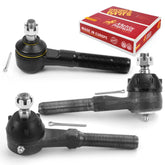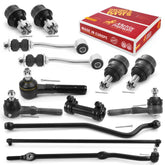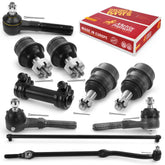The Role of Pitman Arms and Idler Arms in Steering Linkage
In order for a vehicle's steering system to function properly, it requires the assistance of two integral components - the pitman arm and the idler arm. Working together in unison, these components ensure that the steering motion is both smooth and controlled. They play a crucial role in maintaining proper alignment and responsiveness, which are essential for safe and effective operation of the vehicle. Without these components, the steering system would be compromised, resulting in a potentially hazardous situation for the driver and passengers alike.
The Role of Pitman Arms
Pitman arms are a part of the steering linkage that helps convert the rotational motion of the steering wheel into the lateral motion needed to turn the wheels. The composition of a pitman arm can vary depending on the vehicle's make and model, but the typical components you might find in a pitman arm assembly are: main arm body, tapered holes, fasteners, grease fitting, pitman arm nut, dust boot or seal, and mounting points.
A pitman arm is typically connected to the steering gear (such as a steering box) on one end and to the center link (also known as the drag link) on the other end. When the driver turns the steering wheel, the rotational movement is transferred through the steering gear to the pitman arm. This motion is then translated into lateral movement, causing the center link to move, which ultimately turns the front wheels of the vehicle.
The Role of Idler Arms
The idler arm is part of the steering linkage and works in conjunction with the pitman arm to facilitate smooth and controlled steering motion. The exact composition of an idler arm may vary depending on the vehicle's make and model, but the typical components you might find in an idler arm assembly are: Idler arm bracket, idler arm pivot shaft, idler arm bushings, grease fitting, fasteners and hardware, dust boot or seal and mounting points.
The idler arm is typically attached to the vehicle's frame or chassis on one end and to the center link (drag link) on the other end. Its primary function is to provide support and maintain proper alignment for the center link, which helps ensure accurate steering and wheel alignment.
When the driver turns the steering wheel, the rotational force is transmitted through the steering gear to the pitman arm. The pitman arm then moves the center link, which causes the front wheels to turn. The idler arm's role is to hold the other end of the center link in place and allow it to pivot smoothly as the wheels turn. This helps maintain consistent steering geometry and prevents excessive play in the steering system.
Two Important Components of the Steering System
The pitman and idler arms must work together to effectively convert the driver's steering input into controlled wheel movement. The pitman arm plays a crucial role in initiating the steering motion by precisely translating the steering gear's rotation into lateral movement. At the same time, the idler arm must tirelessly support the center link's movement, ensuring that the alignment is maintained and instability prevented at all times. Without these crucial components working in perfect harmony, the entire steering system would be rendered ineffective, leading to potentially disastrous consequences.
To guarantee safe and predictable steering, regular maintenance is crucial for the proper functioning of pitman and idler arms. Metrix Premium Chassis Parts simplifies the process of locating the appropriate steering parts for you. Check out our catalog to locate the precise part for your car!









